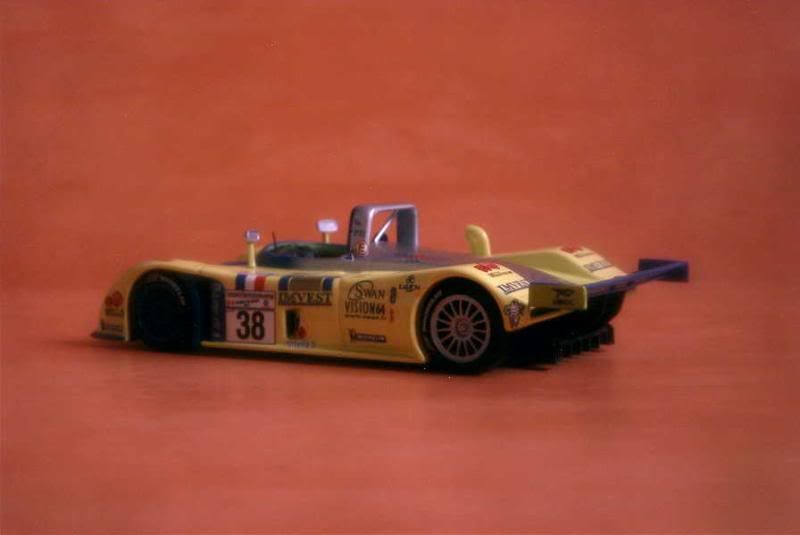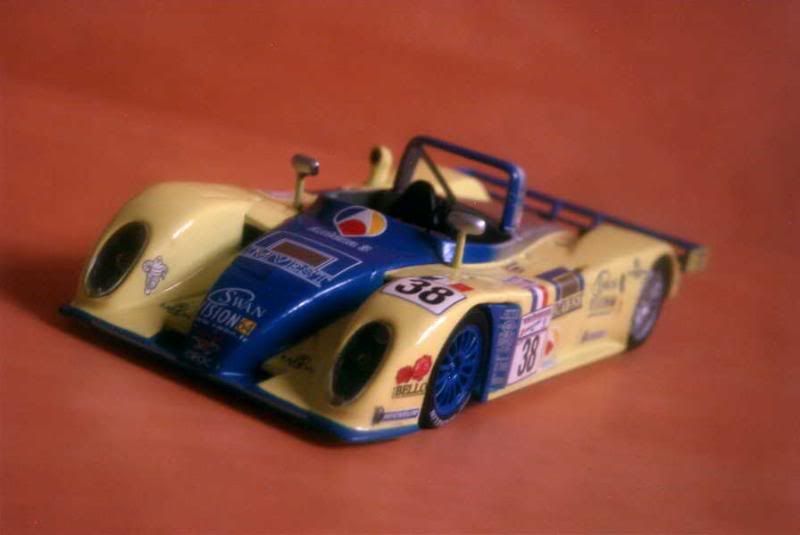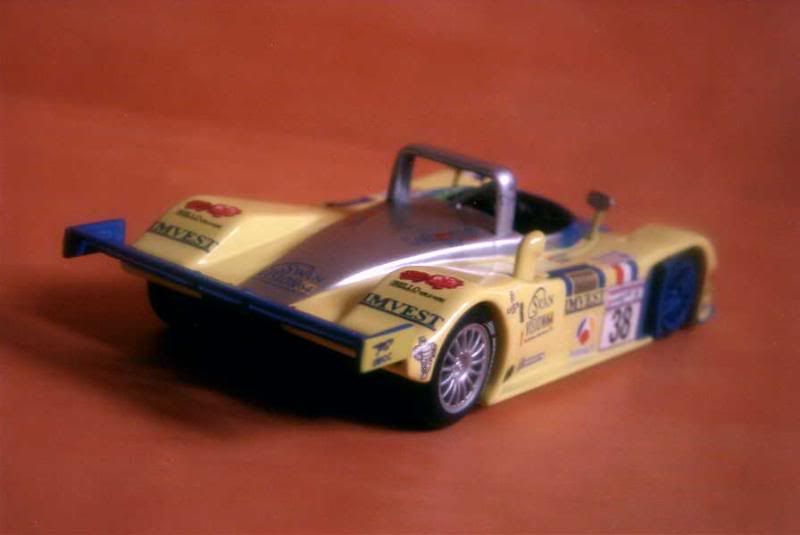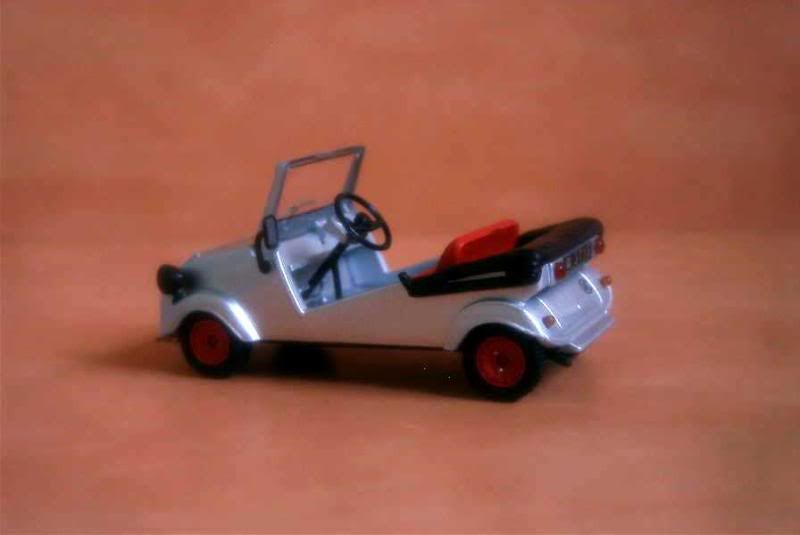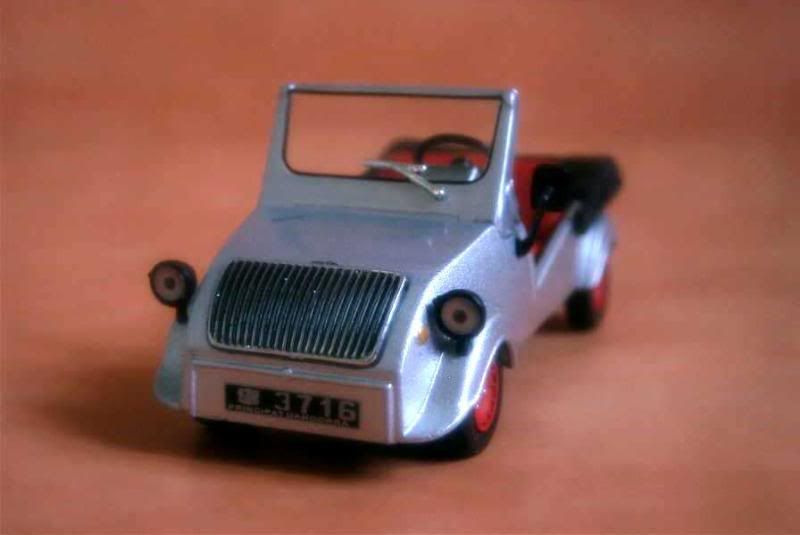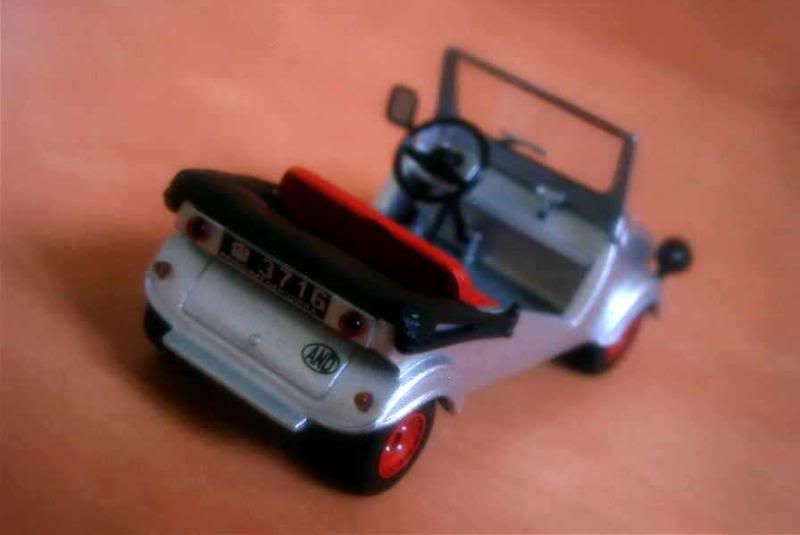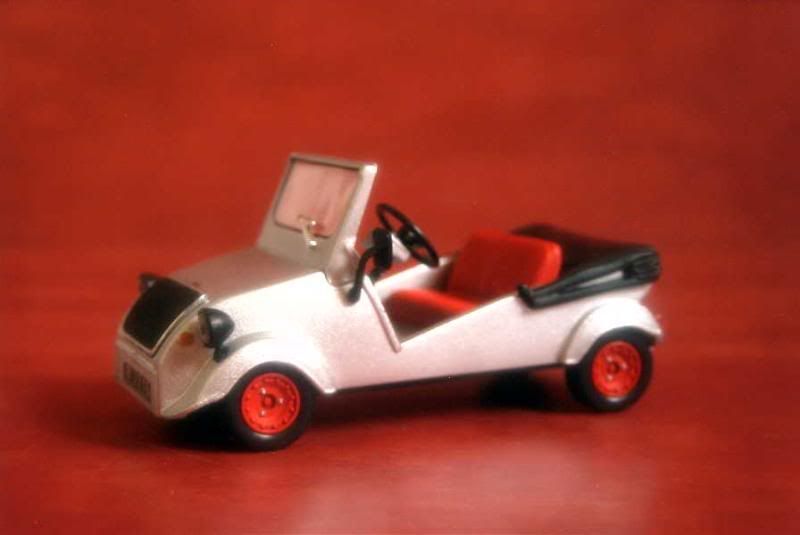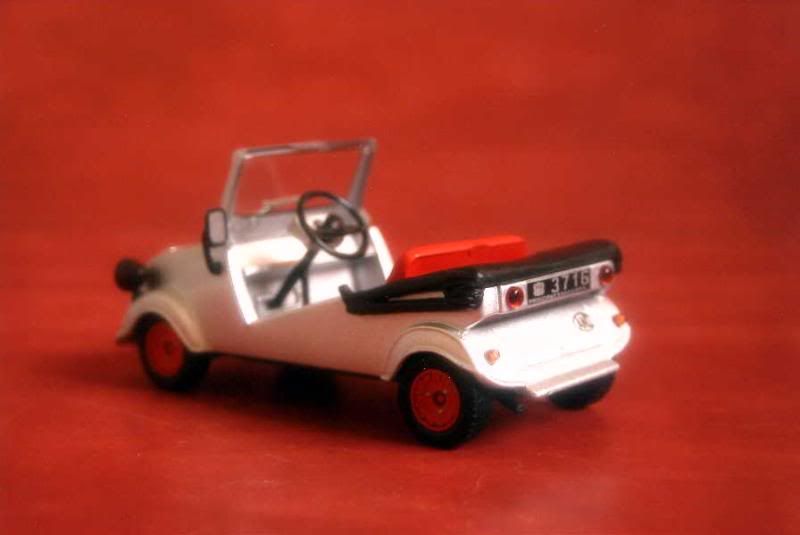A little history
Business is naturally bad when you’re an aircraft engines manufacturer but are barred to build aircraft engines. After World War One, the victorious Allies virtually forbid any activity to the then powerful aeronautical industry of Germany. Though some restrictions would be later eased, companies which specialized in engines had to recycle themselves into other peaceful activities. Being a firm focused on mechanical construction, BMW intended to not venture into unknown territory. In 1921, the Bavarian company started producing a portable boxer engine for industrial use. During the following year, it took over BFW, an aircraft manufacturer equally affected by the Versailles peace treaty’s clauses. BFW had tried, without much success, to convert itself to the production of motorcycles under the names Helios and Flink. Despite their deficiencies, BMW retained the vehicles’ construction, gathering valuable experience and, in 1923, introduced its own design, the R32 fitted with a boxer engine and a shaft drive transmission replacing the traditional chain, a trademark of all subsequent BMW motorcycles. By 1928 BMW had already made itself widely known for the quality of its motorcycles. The next logical step would be to build four-wheel vehicles.
As it had been the case with motorcycles, BMW didn’t create its own outright automobile design from the start. In late 1928, it purchased the Eisenach company - known for the production of the Dixi car - from Gotha, a rolling stock manufacturer which is nonetheless better known for its giant bombers attacking London during World War One. Once again, the transaction occurred among the narrow circle of former aeronautical companies of the vanquished German empire.
Though it had once produced its own designs, Eisenach was reduced since 1927 to build an Austin Seven under licence. As it had done after the BFW takeover, BMW kept the car in production as the BMW-Dixi 3/15. This popular automobile was a deceptive omen for things to come though, even if BMW gave a glimpse of its own future by adding a sporting derivative of the Dixi, the 3/15 Wartburg, in 1930. In 1932, the manufacturer felt sufficiently confident to introduce its first design, the 3/20. As early as 1936, when the 326 was introduced, BMW was known as the producer of mid-range automobiles, performing well, rather expensive but extremely well-built.
The German public had its first look at the 326 model at the Berlin motor show in early 1936. This was BMW’s first four-door saloon, and with a 2-litre straight six engine, the company’s largest car to date. Performances were very interesting, thanks to two carburettors allowing a 50 bhp output. In 1937, a more potent 327 version was introduced. Only available as a two-door coupe or convertible, the 327 sat on a shorter chassis and enjoyed a more streamlined body, enough to bring the car to 125 kph with only 55 bhp. For those who wanted yet more action – and for most of them, those who wanted to race – BMW presented the 328 in April 1938. Output hopped forward to no less than 80 bhp, enabling a 150 kph top speed. The 328 was indeed a head-turner back then, and has become a classic since then.
Production of all BMW cars continued until 1941, when all German companies were asked to concentrate themselves on the war production. This didn’t help though and, as everybody knows, the Reich crumbled a second time in 1945.
For BMW, the situation was even worse after World War Two than it had been one conflict earlier. Production was restarted in Munich, the company re-centering its activities to Bavaria for the main Eisenach plant in Thuringia had felt into Soviet hands. Utter confusion arose when it appeared that the Russians too had put the prewar BMW models back into production. Years of legal struggle followed, the Western half of BMW refusing to see lower-quality Eastern cars being exported under the same name, at the risk of destroying its reputation. The dispute was settled in 1952 when the East Germany company changed its name to EMW.
BMW produced its 326 range until the introduction of a brand-new 501, in October 1952. On the other side of the border, BMW/EMW replaced its prewar saloon by an updated 340 as early as 1948, but kept it longer in production, the last of these relics leaving the Eisenach factory as late as 1955 before being succeeded by the first Wartburg car. Interestingly, the 327 also remained in production until 1955. Quite a paradox for this iconic sportscar of the Thirties to end up being constructed in a communist country!
About the model
Model: BMW 327
Year: 1941
Maker: Detail Cars
Scale: 1/43
Distributed by: Detail Cars
Acquired: brand new, in June 2005, in Manila, Philippines
This model is certainly one of the most tasteful ever produced by the defunct Italian die-cast maker Detail Cars. It is beautifully crafted and nicely assembled (quality of workmanship is often a problem with Detail Cars models): 15/20.
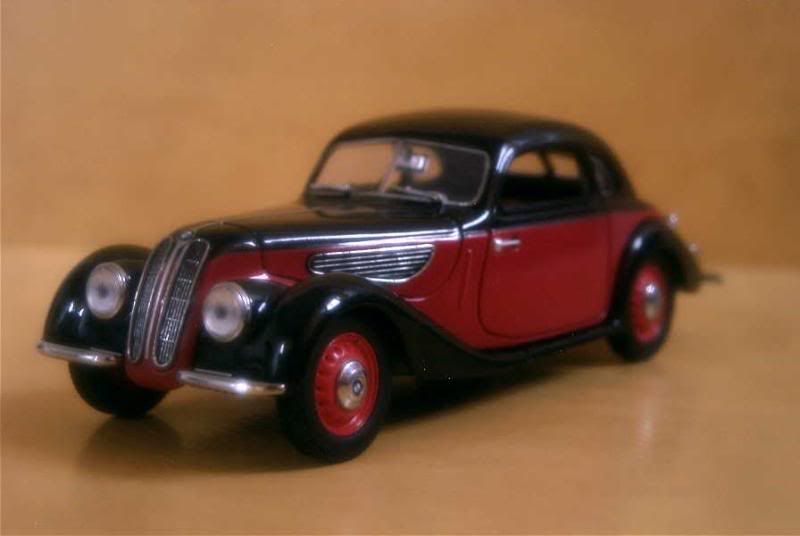
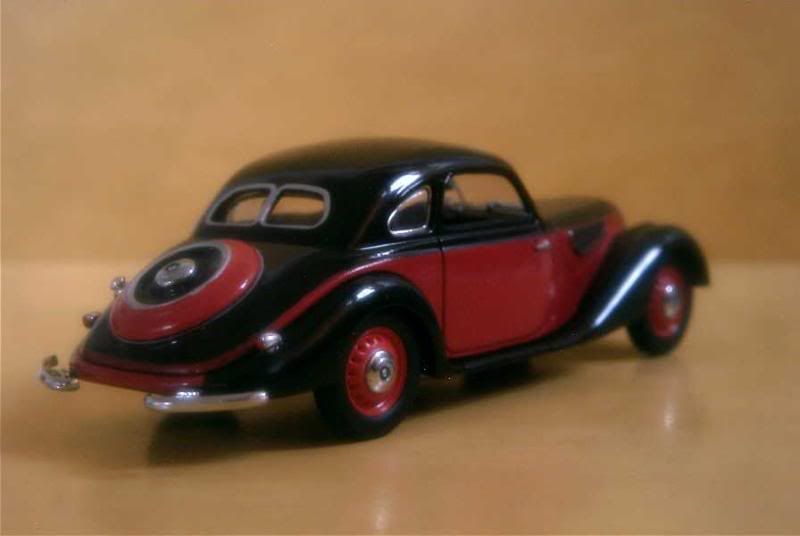

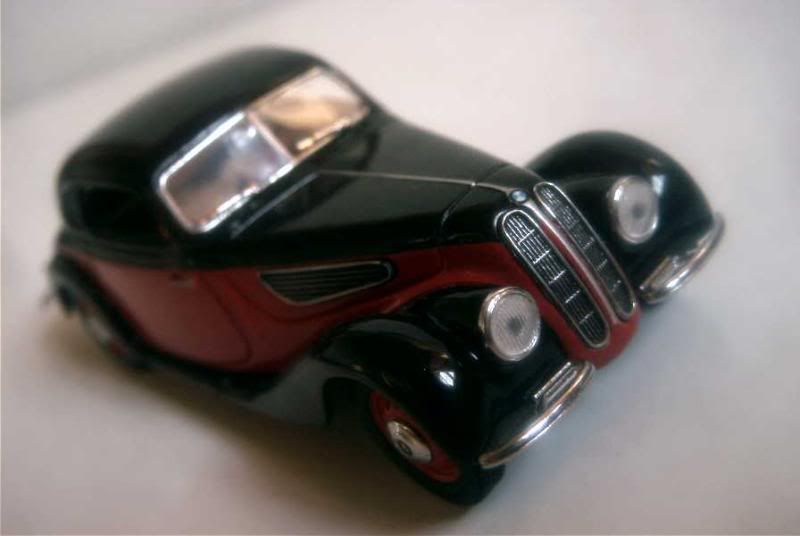
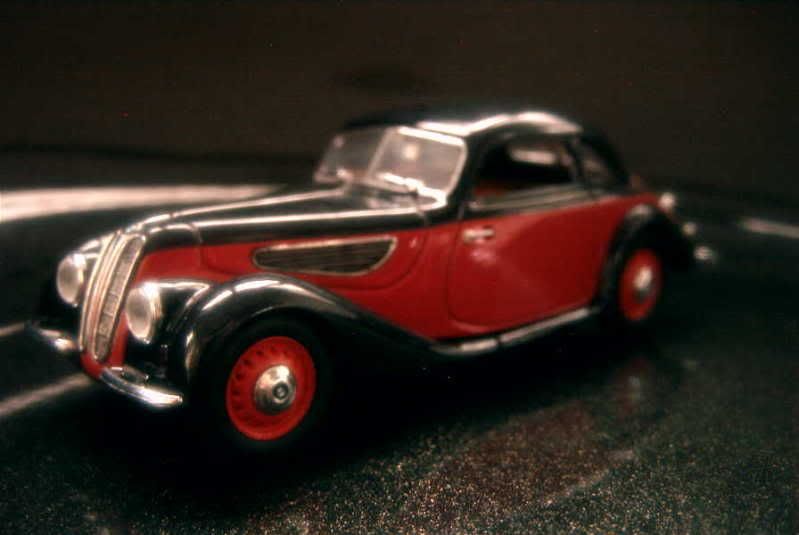
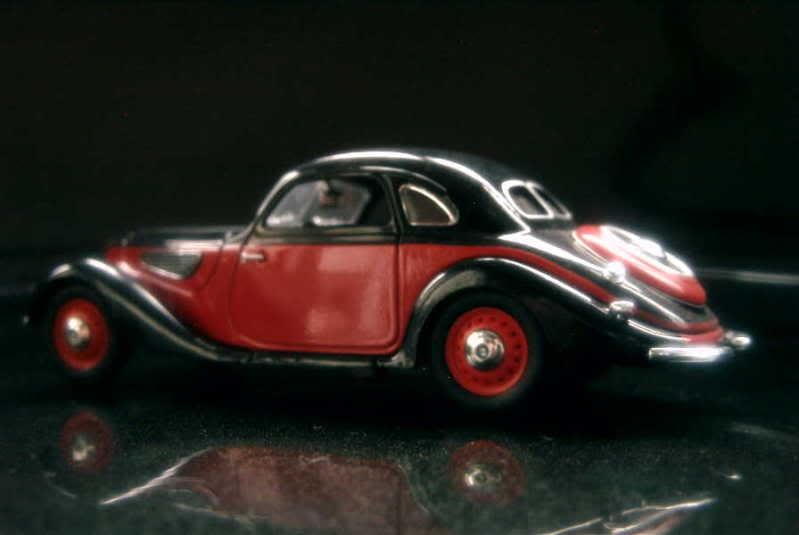
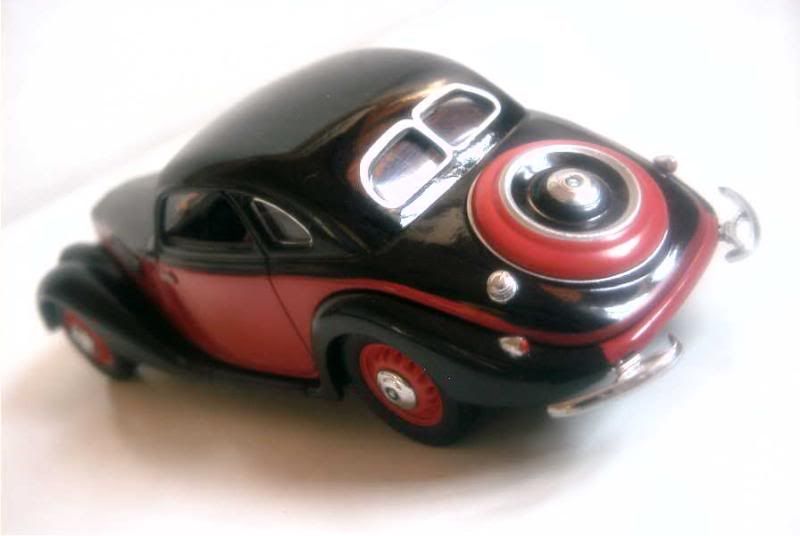
Business is naturally bad when you’re an aircraft engines manufacturer but are barred to build aircraft engines. After World War One, the victorious Allies virtually forbid any activity to the then powerful aeronautical industry of Germany. Though some restrictions would be later eased, companies which specialized in engines had to recycle themselves into other peaceful activities. Being a firm focused on mechanical construction, BMW intended to not venture into unknown territory. In 1921, the Bavarian company started producing a portable boxer engine for industrial use. During the following year, it took over BFW, an aircraft manufacturer equally affected by the Versailles peace treaty’s clauses. BFW had tried, without much success, to convert itself to the production of motorcycles under the names Helios and Flink. Despite their deficiencies, BMW retained the vehicles’ construction, gathering valuable experience and, in 1923, introduced its own design, the R32 fitted with a boxer engine and a shaft drive transmission replacing the traditional chain, a trademark of all subsequent BMW motorcycles. By 1928 BMW had already made itself widely known for the quality of its motorcycles. The next logical step would be to build four-wheel vehicles.
As it had been the case with motorcycles, BMW didn’t create its own outright automobile design from the start. In late 1928, it purchased the Eisenach company - known for the production of the Dixi car - from Gotha, a rolling stock manufacturer which is nonetheless better known for its giant bombers attacking London during World War One. Once again, the transaction occurred among the narrow circle of former aeronautical companies of the vanquished German empire.
Though it had once produced its own designs, Eisenach was reduced since 1927 to build an Austin Seven under licence. As it had done after the BFW takeover, BMW kept the car in production as the BMW-Dixi 3/15. This popular automobile was a deceptive omen for things to come though, even if BMW gave a glimpse of its own future by adding a sporting derivative of the Dixi, the 3/15 Wartburg, in 1930. In 1932, the manufacturer felt sufficiently confident to introduce its first design, the 3/20. As early as 1936, when the 326 was introduced, BMW was known as the producer of mid-range automobiles, performing well, rather expensive but extremely well-built.
The German public had its first look at the 326 model at the Berlin motor show in early 1936. This was BMW’s first four-door saloon, and with a 2-litre straight six engine, the company’s largest car to date. Performances were very interesting, thanks to two carburettors allowing a 50 bhp output. In 1937, a more potent 327 version was introduced. Only available as a two-door coupe or convertible, the 327 sat on a shorter chassis and enjoyed a more streamlined body, enough to bring the car to 125 kph with only 55 bhp. For those who wanted yet more action – and for most of them, those who wanted to race – BMW presented the 328 in April 1938. Output hopped forward to no less than 80 bhp, enabling a 150 kph top speed. The 328 was indeed a head-turner back then, and has become a classic since then.
Production of all BMW cars continued until 1941, when all German companies were asked to concentrate themselves on the war production. This didn’t help though and, as everybody knows, the Reich crumbled a second time in 1945.
For BMW, the situation was even worse after World War Two than it had been one conflict earlier. Production was restarted in Munich, the company re-centering its activities to Bavaria for the main Eisenach plant in Thuringia had felt into Soviet hands. Utter confusion arose when it appeared that the Russians too had put the prewar BMW models back into production. Years of legal struggle followed, the Western half of BMW refusing to see lower-quality Eastern cars being exported under the same name, at the risk of destroying its reputation. The dispute was settled in 1952 when the East Germany company changed its name to EMW.
BMW produced its 326 range until the introduction of a brand-new 501, in October 1952. On the other side of the border, BMW/EMW replaced its prewar saloon by an updated 340 as early as 1948, but kept it longer in production, the last of these relics leaving the Eisenach factory as late as 1955 before being succeeded by the first Wartburg car. Interestingly, the 327 also remained in production until 1955. Quite a paradox for this iconic sportscar of the Thirties to end up being constructed in a communist country!
About the model
Model: BMW 327
Year: 1941
Maker: Detail Cars
Scale: 1/43
Distributed by: Detail Cars
Acquired: brand new, in June 2005, in Manila, Philippines
This model is certainly one of the most tasteful ever produced by the defunct Italian die-cast maker Detail Cars. It is beautifully crafted and nicely assembled (quality of workmanship is often a problem with Detail Cars models): 15/20.








